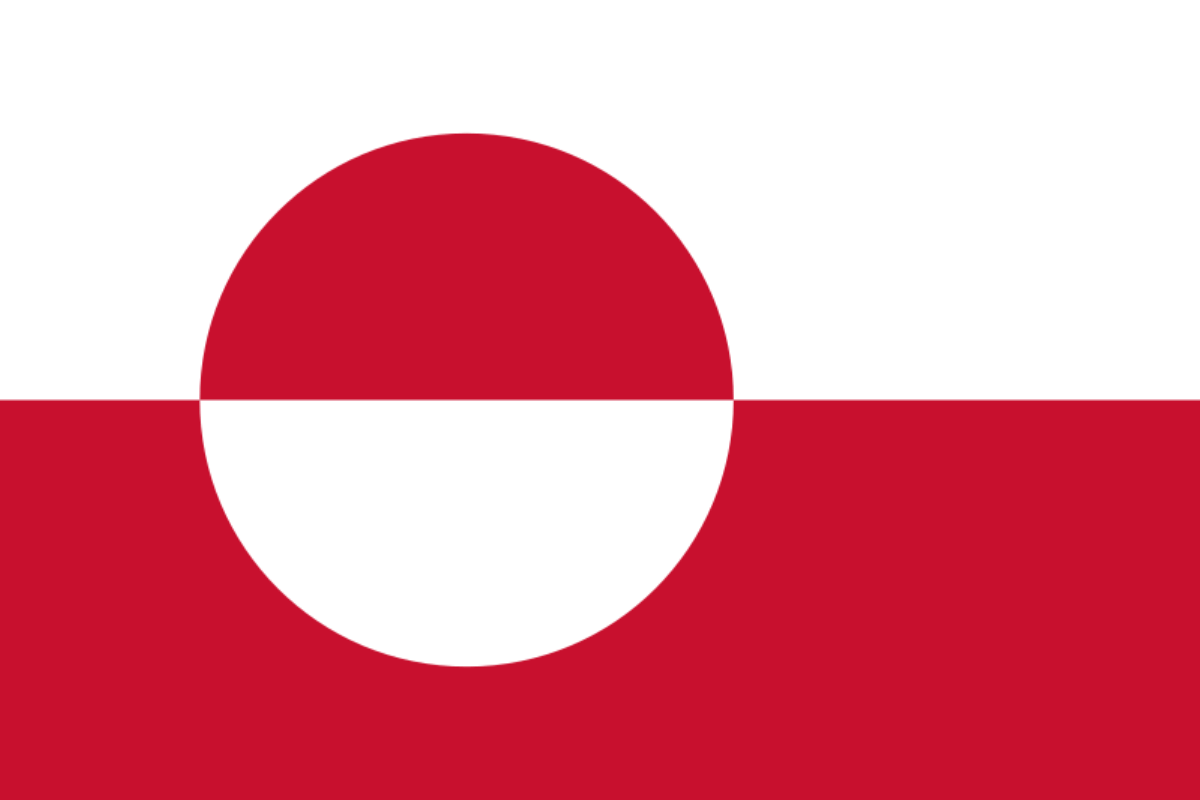The national animal of Greenland is the polar bear. A very fitting national animal for a country known for its icy climate, the polar bear features prominently on the country’s coat of arms and is one of the most important natural symbols in Greenland. They embody many vital national values.
It is hard to imagine a more fitting national animal than the polar bear for a country such as Greenland.
They are naturally one of the most impressive and daunting members of the native wildlife and few animals are so readily associated with their particular environment as polar bears are.
Let’s find out more.

What is the national animal of Greenland?
The national animal of Greenland is the polar bear.
Unsurprisingly given the country’s cold, unforgiving landscape, not a great many species can survive on Greenland.
That is not to say, though, that there is no biodiversity.
But by and large, it is species like the polar bear, well adapted to the cold, that are best able to survive in Greenland.
Polar bear are very closely related to brown bear—so closely, in fact, that the two species can have viable offspring.
Polar bears are the largest extant species of bear and the largest land carnivore.
Adult males can weigh anywhere from 700 to 1,800 pounds—females, though, are considerably smaller.
They have white fur, though sometimes yellowish, and their skin is black with a layer of insulating fat.
They have large paws that are well adapted to walking on ice and swimming through the cold water.
They are considered to be marine mammals as they are very heavily dependent on marine ecosystems.
They will dwell on solid ground when they have to, but in general they prefer to spend their time on annual sea ice.
Male bears will guard their females during the breeding season, and young may stay with their mother for more than two years before becoming fully independent.
The threat of climate change is a big problem for the polar bear.
Their annual sea ice retreats further and further each year, and this gives them less places to live and access to less and less prey.
They are considered to be a vulnerable species by the IUCN Red List.
They were given their name by Welsh naturalist Thomas Pennant in 1771, though they were first described by western science in Carl Linnaeus’ 1758 edition of System Naturae.
So, why are they Greenland’s national animal?
Why is the polar bear the national animal of Greenland?
The polar bear is the national animal of Greenland for a variety of reasons.
On the one hand, they are symbols of a great many things to the people of Greenland.
They embody strength, power, courage and boldness, while at the same time also being seen as images of grace, stealth and beauty.
They may be enormously powerful and dangerous, but they are also not seen as lumbering, clumsy beasts, but the graceful stalkers that they are.
Of course, there are also few animals which so perfectly embody the natural beauty of Greenland on a more literal level.
Greenland is known for its cold climate and often little else to the average person who isn’t familiar with the nation.
It is known as an icy, snowy tundra, and for most people there is perhaps no animal that better embodies such a landscape than the roving polar bear.
On the other hand, though, the question of conservation is one that often influences the decision to make an animal the national animal.
Polar bears face a grave existential threat, and without serious assistance, the species could quickly become seriously endangered in the near future.
Making them the national animal brings some attention and awareness to this.
Where do polar bears live?
Polar bears live exclusively in Arctic Circle in the northern hemisphere; they are not found in Antarctica.
They live virtually across the Arctic and can be found in places like Greenland, Svalbard off the coast of Norway, and parts of the northern reaches of Canada.
Anywhere there is available prey year round in the far north of the world you are in with a chance of seeing polar bears, as they are fairly widely distributed across this area.
As mentioned, they prefer the annual ice but they will take solid ground if prey is available.
What do polar bears eat?
Polar bears are ambush predators, and mostly eat things like seal and arctic fox.
Seal are their preferred prey, as the blubber of a seal can keep them fed for a longer period of time.
This is why, as mentioned, they are in part considered to be marine mammals; they rely very heavily on marine animals like ringed seals and bearded seals.
They may also hunt walruses and even beluga whales.
Like other bear species, they will often hibernate and go many months without eating, particularly when a mother is nursing young.
They will then emerge when the season is right and resume their hunting of seals.
Doubtless one of nature’s most fearsome predators, then, the polar bear fittingly embodies the rugged, cold, wild frontier that is Greenland.
The nation could not have found a better symbol from the animal world to represent their nation, and again there are few animals in nature for whom associations across cultures are so uniform.
They are dangerous, fearsome predators, but at the same time are embodiments of the power and wonder of the natural world.

